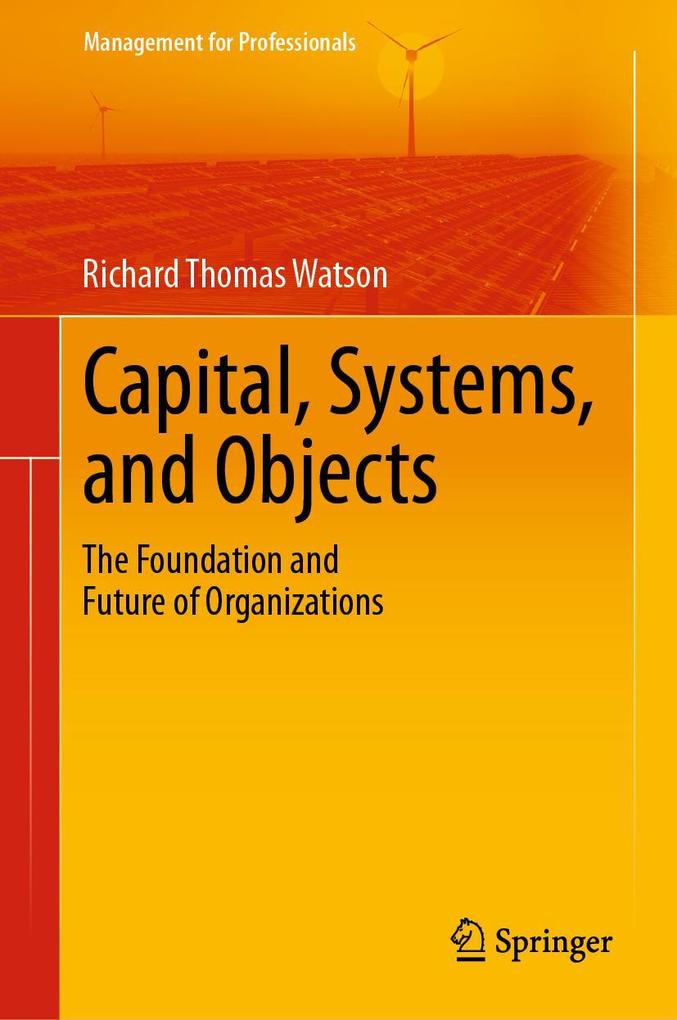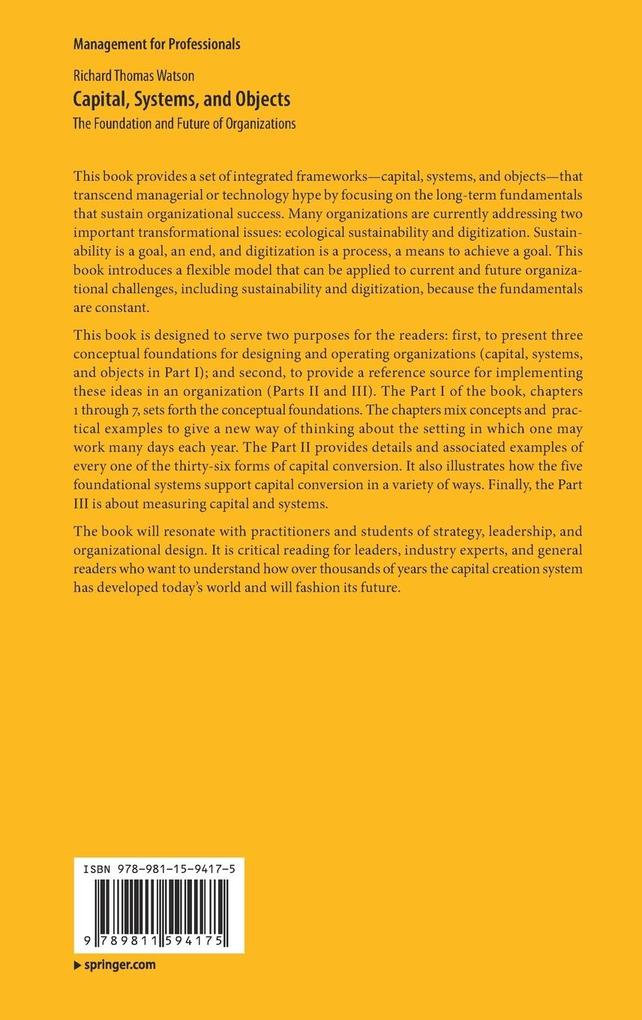
Zustellung: Sa, 31.05. - Mi, 04.06.
Versand in 1-2 Wochen
VersandkostenfreiBestellen & in Filiale abholen:
This book provides a set of integrated frameworks-capital, systems, and objects-that transcend managerial or technology hype by focusing on the long-term fundamentals that sustain organizational success. Many organizations are currently addressing two important transformational issues: ecological sustainability and digitization. Sustainability is a goal, an end, and digitization is a process, a means to achieve a goal. This book introduces a flexible model that can be applied to current and future organizational challenges, including sustainability and digitization, because the fundamentals are constant.
This book is designed to serve two purposes for the readers: first, to present three conceptual foundations for designing and operating organizations (capital, systems, and objects in Part I); and second, to provide a reference source for implementing these ideas in an organization (Parts II and III). The Part I of the book, chapters 1 through 7, sets forth the conceptual foundations. The chapters mix concepts and practical examples to give a new way of thinking about the setting in which one may work many days each year. The Part II provides details and associated examples of every one of the thirty-six forms of capital conversion. It also illustrates how the five foundational systems support capital conversion in a variety of ways. Finally, the Part III is about measuring capital and systems.
The book will resonate with practitioners and students of strategy, leadership, and organizational design. It is critical reading for leaders, industry experts, and general readers who want to understand how over thousands of years the capital creation system has developed today's world and will fashion its future.
Inhaltsverzeichnis
Chapter 1: A Capital Idea. - Chapter 2: The Organization as a Capital Creation System. - Chapter 3: The Growth of the Capital Creation System. - Chapter 4: Systems for Creating Capital. - Chapter 5: Energy for Capital Creation. - Chapter 6: Objects. - Chapter 7: The Future. - Section 2: Capital Creation Mechanisms. - Chapter 8: Economic Capital. - Chapter 9: Human Capital. - Chapter 10: Organizational Capital. - Chapter 11: Natural Capital. - Chapter 12: Social Capital. - Chapter 13: Symbolic Capital. - Section 3: Capital and Systems Measurement. - Chapter 14: The Measurement of Capital. - Chapter 15: The Measurement of Systems.
Produktdetails
Erscheinungsdatum
02. Dezember 2020
Sprache
englisch
Auflage
1st edition 2021
Seitenanzahl
256
Reihe
Management for Professionals
Autor/Autorin
Richard Thomas Watson
Verlag/Hersteller
Produktart
gebunden
Abbildungen
XXI, 234 p. 28 illus., 27 illus. in color.
Gewicht
553 g
Größe (L/B/H)
241/160/20 mm
ISBN
9789811594175
Entdecken Sie mehr
Bewertungen
0 Bewertungen
Es wurden noch keine Bewertungen abgegeben. Schreiben Sie die erste Bewertung zu "Capital, Systems, and Objects" und helfen Sie damit anderen bei der Kaufentscheidung.











